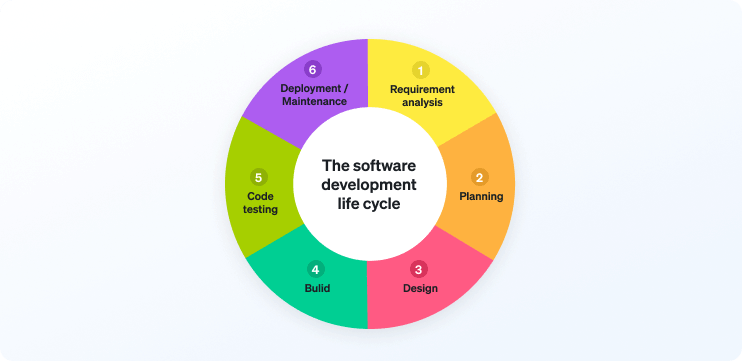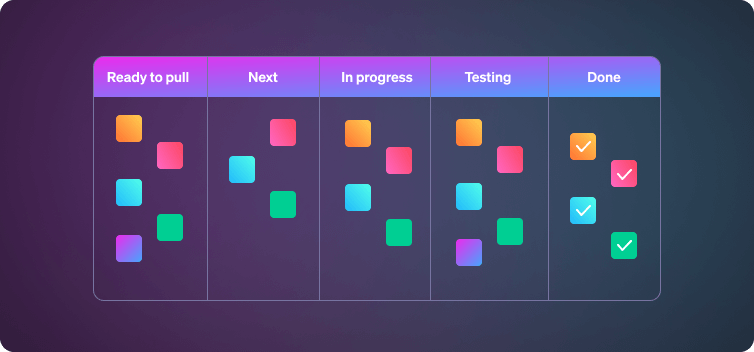
In its simplest form, software development is the process of creating software. However, this process isn’t as simple as it sounds. It involves many other phases, including envisioning, designing, testing and deployment.
In recent years, there has been a shift towards more agile methods of software development. These are more collaborative and iterative approaches that allow for more flexibility and faster feedback. The Software Development Life Cycle, or SDLC, serves the purpose of improving visibility and streamlining the entire software development process, enabling developers to perform better and deliver faster.
Having an understanding of the software development life cycle is important – but what exactly is it? Why does SDLC matter? And how can you improve your SDLC?
The software development life cycle (SDLC) is a process that outlines the steps necessary to develop a piece of software. Depending on the size and complexity of the software, the SDLC can be executed in a number of different ways. Typically, the SDLC is executed in a waterfall model where each step flows into the next. However, some organisations are beginning to move towards an agile methodology where steps are executed in a more iterative fashion.

SDLC is typically broken down into the following steps:
Analysis: The first step in the SDLC is to analyse the business requirements for the software. This includes understanding the purpose of the software, the target users, and the expected outcomes.
Design: This includes creating diagrams and models that show how the software will work.
Development: This involves writing the code for the software and testing it to make sure it meets the requirements.
Deployment: This involves installing the software on the appropriate servers and testing it to make sure it is functioning correctly.
Maintenance: This includes fixing any issues that may arise and making updates to the software as needed.
SDLC is a conceptual model that defines the stages and tasks of the software development process. The framework is important because it helps manage complexity and risk, and allows for the orderly delivery of software products. The model consists of a series of interrelated tasks that must be completed in order to produce a working system.
Each phase of SDLC has specific tasks and deliverables that must be completed before the next phase can begin. This ensures that all requirements are met and that the system functions as intended, enabling developers to work more efficiently and avoid overlap in work.
In order for an SDLC to have a clear direction and purpose, it is essential to choose an agile methodology that is appropriate for the project.

Some of the most popular agile methodologies are scrum, kanban, and extreme programming (XP). Here is a quick overview of these different methodologies:
Choosing the most suitable agile methodology enables the SDLC to have a clear purpose and end-goal. It also helps to take into account budgets, capacity, team logistics, and other factors that are important to the success of the project.
Planning is crucial to an efficient SDLC because it helps ensure that the team is working towards common goals and that everyone is aware of what needs to be done. Standards, requirements, and processes help to avoid confusion and ensure that tasks are completed in a logical and coordinated manner.
One of the main benefits of using standards is that they provide a common language for the team. This way, everyone is on the same page and there is no confusion about expectations. Standards can also help to streamline the development process by providing pre-determined templates and guidelines that can be used as a starting point.
Testing is an important process in software development. It enables developers to spot issues earlier on and requires fewer resources than manual testing. Automated testing is a type of software testing that uses software to test other software.
Some benefits of automated testing include:
When you’re working with large amounts of code, trying to manually keep track of where you are and all the possible places you could go next can be extremely difficult and time-consuming. This is where AI tools like Tabnine can make the SDCL easier, faster and more accurate.
Tabnine is a tool that uses artificial intelligence to help you work faster and more accurately with source code. It does this by providing you with a list of possible completions for the code you are typing, as well as showing you the context of each suggestion. This context is very important, as it helps you to understand how the code you are typing fits into the rest of the codebase.
This is especially useful when you are working on a large project with a lot of code. Tabnine can help you to quickly find and fix errors, as well as navigate through the codebase. It can also help you to write code more efficiently, as you can quickly find and insert code snippets into your project.
In agile software development, timely and effective feedback from users is essential to the success of the project. The feedback helps the team to understand user needs and to make necessary changes to the product. In order to ensure that the feedback is timely and effective, it is important to get it frequently, at all stages of the SDLC. This enables the team to minimise the amount of rework needed at a later stage, but also to build a better product.
Many programmers feel that the best way to be productive is to do as many tasks as possible at the same time. However, this can actually lead to inefficiency and lower productivity. Multitasking can lead to task switching, which in turn results in loss of focus and decreased productivity.

By streamlining their tasks and focusing on one task at a time, programmers can optimise their workflow and ensure higher quality deliveries. In order to define your Work in Progress limit, you need to take into account factors such as team size, customer demands and business capacity. It is important to control and modify your WIP limit as outside factors change.
Developers write software to solve problems. The sooner they can find and fix errors, the sooner the software is ready for its intended purpose. Frequent code reviews and pair programming help developers do just that.
There are several benefits to code reviews. One is that they enable developers to share knowledge. By reviewing someone else’s code, you learn how they solved the problem, what techniques they used, and what constraints they faced. You also learn about the various ways the code could be improved.
SDLC is necessary because it helps developers manage risks, ensures that products are delivered on time and within budget, and improves communication between stakeholders. AI-driven tools like Tabnine can assist in creating accurate code that requires minimal refactoring by detecting and determining patterns and architectural decisions in your code. This means that you can spend more time designing your code rather than writing it.